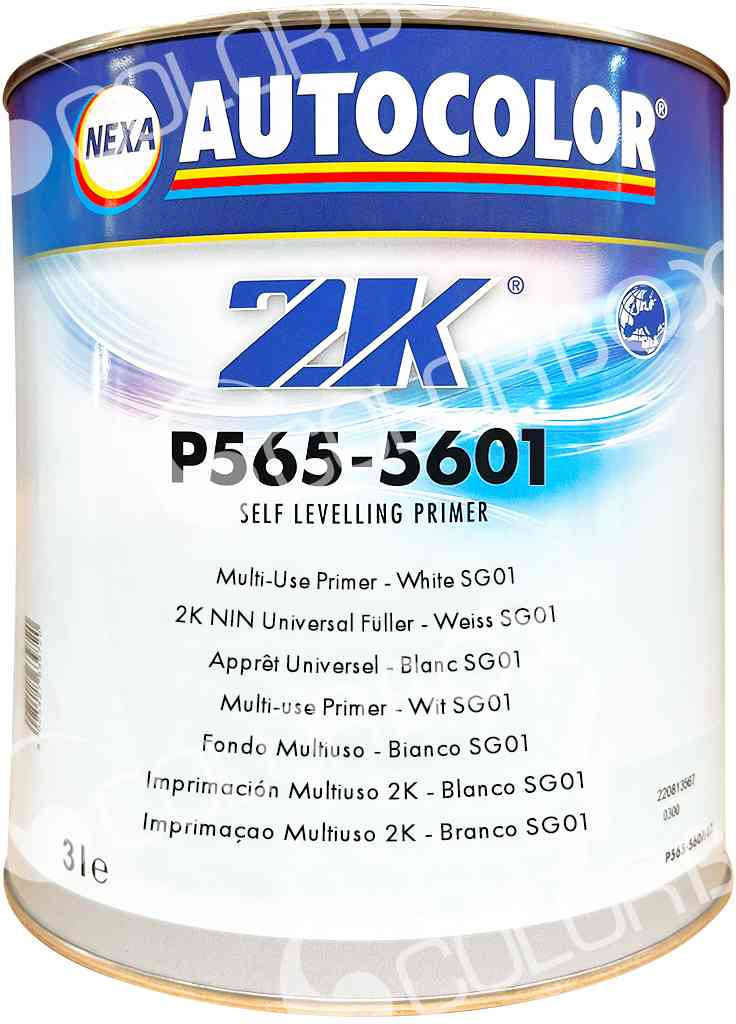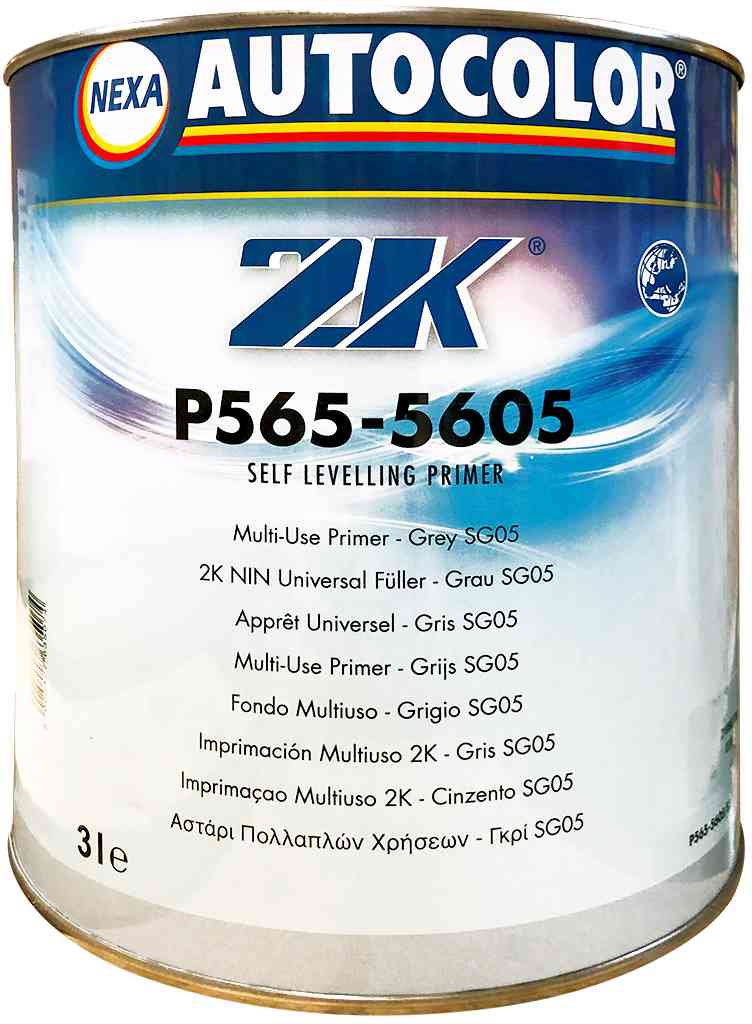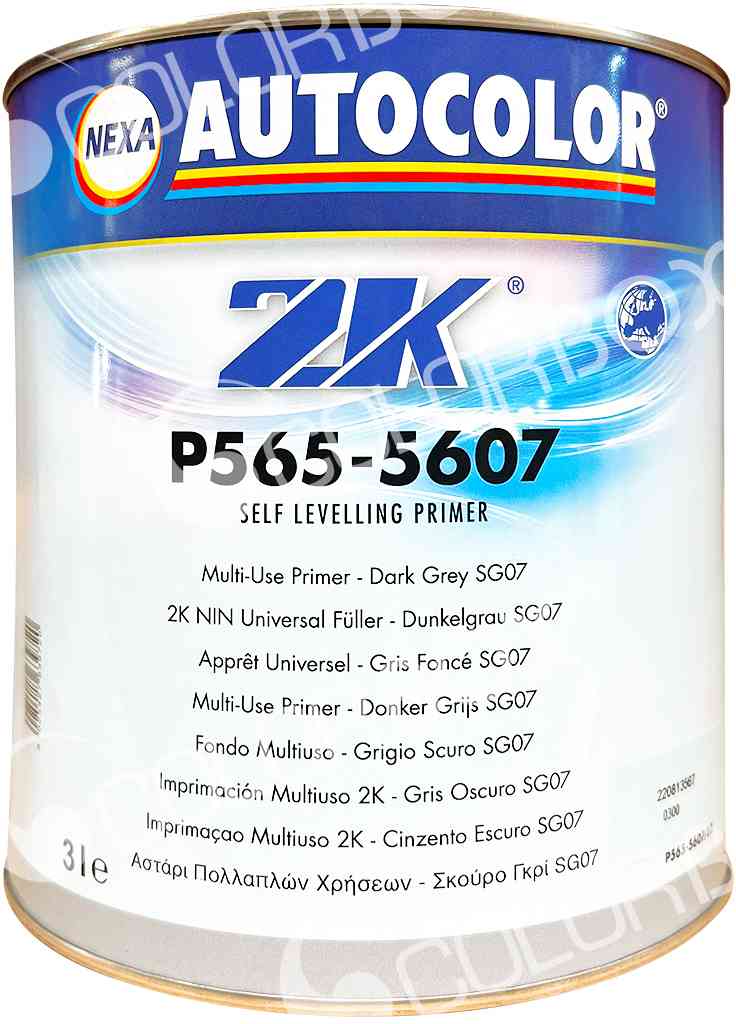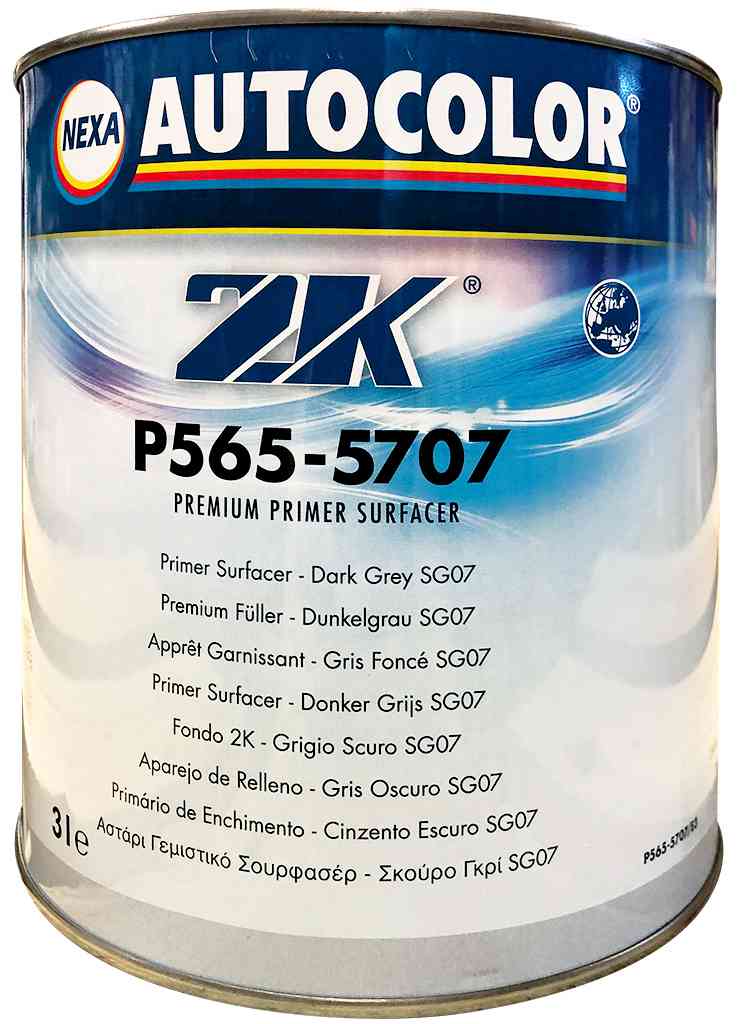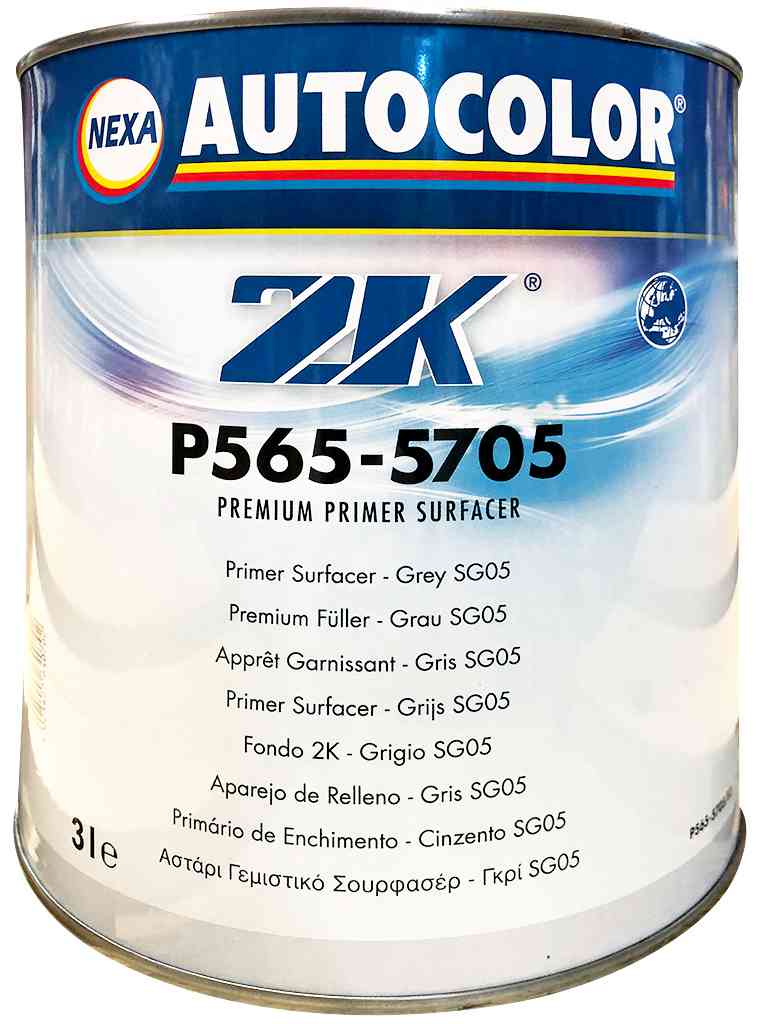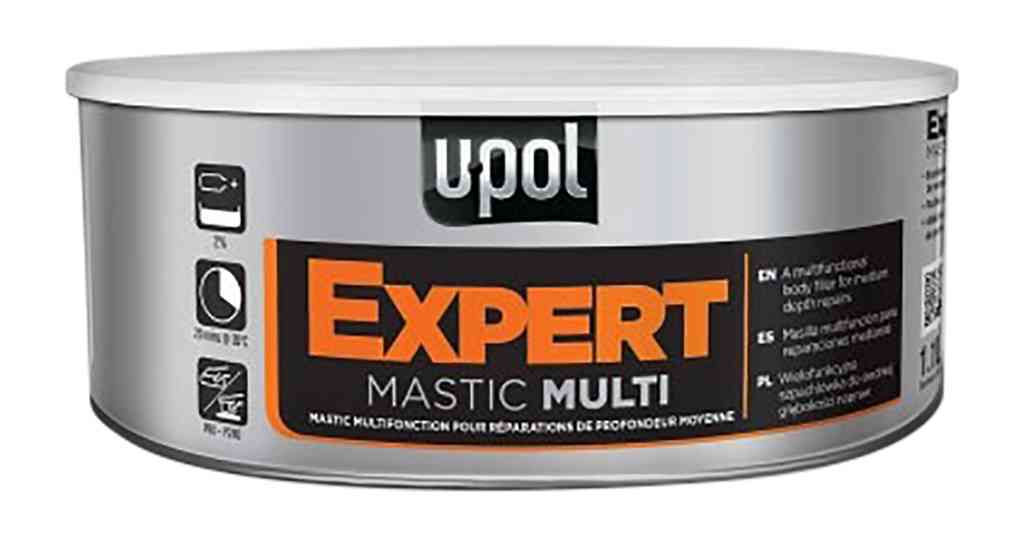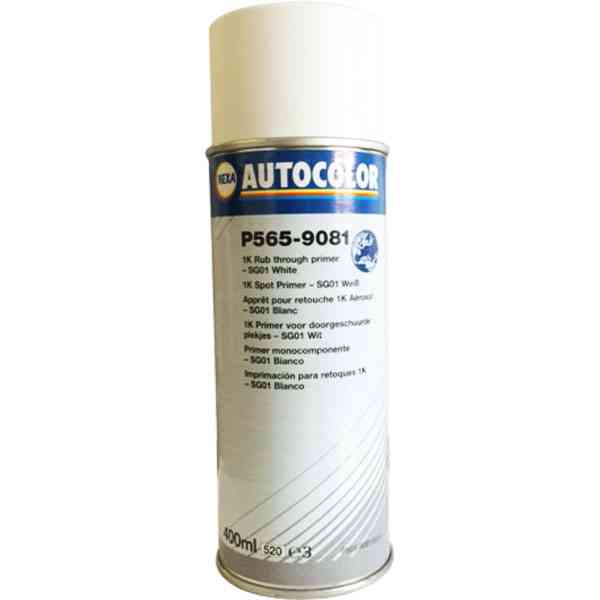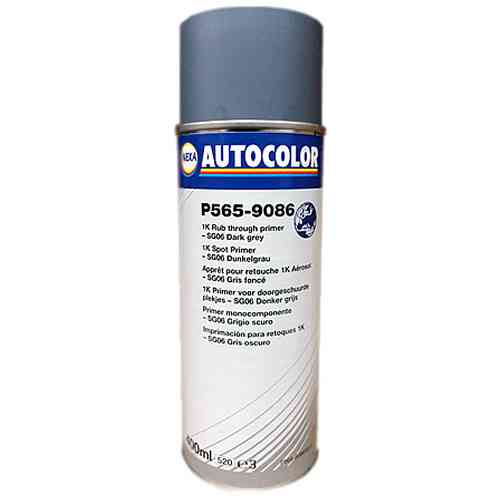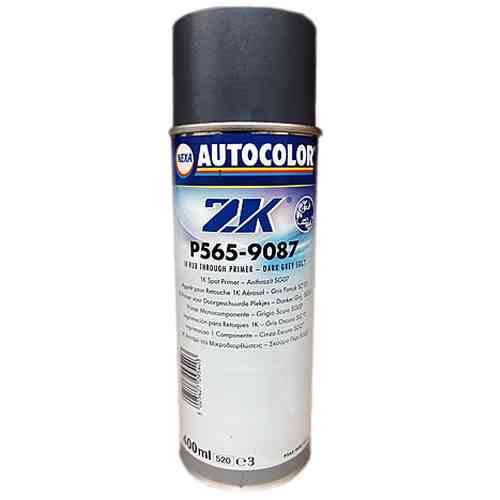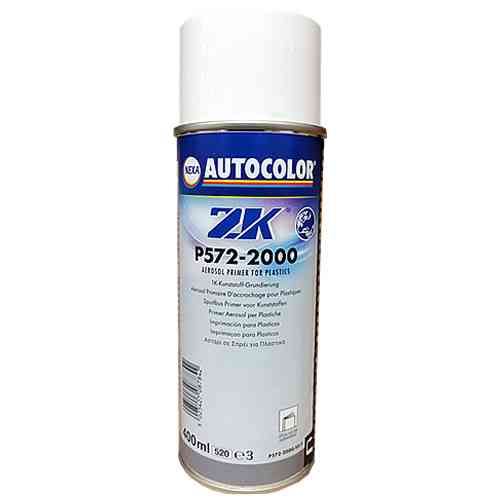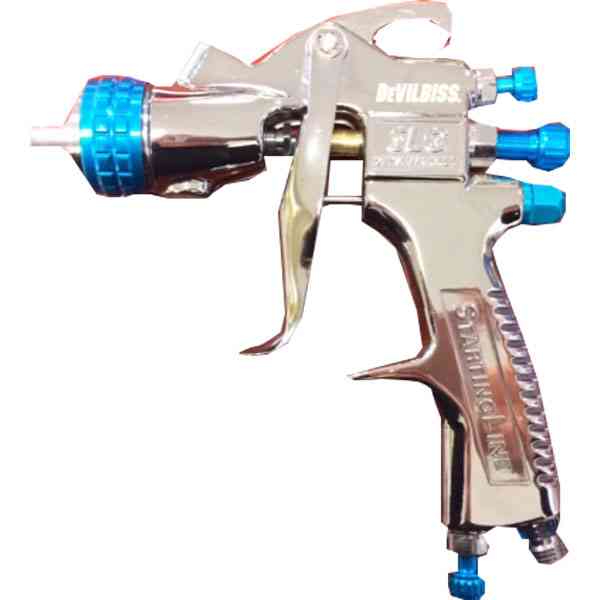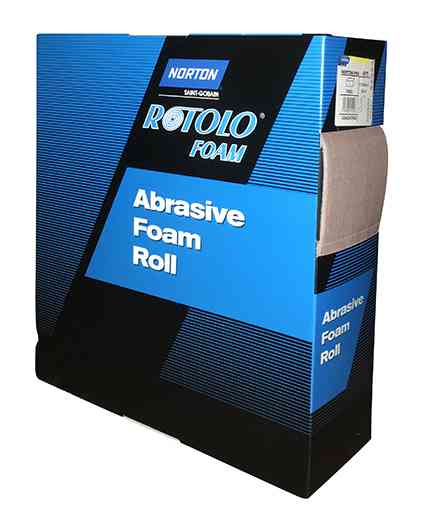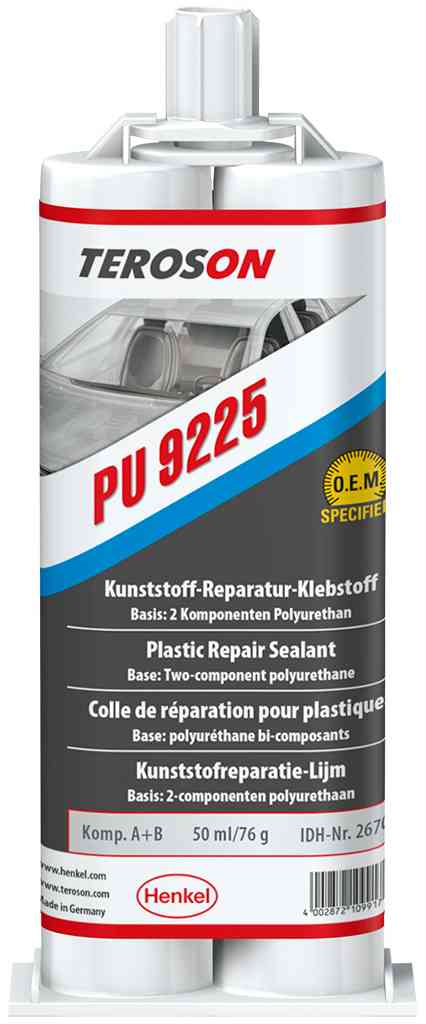
Apprêt AUTOCOLOR
En avez-vous
besoin ?
Pourquoi opter pour l’apprêt Nexa Autocolor ?
L'apprêt aide la peinture à s'appliquer uniformément. Par exemple :
- Ils assurent l'adhérence pour créer une liaison entre la peinture et le métal.
- Ils empêchent la peinture de pénétrer dans le métal, ce qui crée une finition terne.
- Ils sèchent rapidement, résistent à la rouille et se poncent facilement.
Tout ce qu’il faut savoir sur les apprêts
L’importance des apprêts
La couche d’apprêt permet de combler les petites imperfections. Il s’agit d’un revêtement de réparation et protège de la rouille.
Les types d’apprêts de base
- L'apprêt de laque acrylique : il est le plus facile à utiliser. D’abord, il suffit de le mélanger et d’appliquer une couche d’apprêt à l’aide d’une pointe de pistolet. Ensuite, Laisser l'apprêt sécher complètement avant de le poncer avec du papier et d'appliquer une deuxième et une troisième couche.
- L’apprêt en uréthane : il est très populaire aujourd'hui. Il offre une meilleure adhérence et comprend un durcisseur catalyseur garantissant la durabilité. La plupart du temps, une buse de pistolet 2.0 est utilisée pour augmenter la quantité de produit appliqué. Trois couches sont généralement appliquées en attendant 10 minutes après chaque pose.
Différents types d'apprêts automobiles
- Apprêt époxy : L'apprêt époxy est considéré comme une bonne base standard lorsqu'il s'agit de s’assurer que la peinture automobile adhère au métal et favorise une finition de peinture de qualité. Il est formulé spécifiquement pour prévenir la corrosion. Ainsi, l'apprêt époxy pour voitures ne se ponce pas.
- Apprêt polyester : il remplit les petites rayures et les bosses comme le ferait un mastic. En effet, sa capacité de remplissage est la plus élevée par rapport aux autres apprêts pulvérisables. Il est donc parfait pour combler les imperfections de la carrosserie. Toutefois, il est plus cassant et risque d’être sujet à la fissuration, contrairement à l’apprêt époxy. Il est donc excellent pour les petits travaux de réparation et de remplissage, mais peut ne pas être le meilleur choix pour une voiture entière.
- Scellant à l'uréthane : Ce type d'apprêt est mieux utilisé comme une couche adhésive solide sur laquelle la peinture peut adhérer. Il est parfait pour la peinture d’un véhicule qui est déjà en bon état.
- Acid Etch Primer : Ce type d'apprêt sèche beaucoup plus rapidement que les autres, il est donc utilisé dans de nombreuses réparations de carrosserie dans les ateliers automobiles pour accélérer le temps de réparation.
- Enamel Primers/Sealers : Les apprêts pour émail sont extrêmement économiques et, tout comme l'époxy, ils fournissent une bonne base à laquelle la peinture automobile peut adhérer.
- L’apprêt phosphatant ou aussi appelé washprimer qui est un accrocheur pour l’acier ou l’aluminium. Son pouvoir anticorrosif est faible mais il a de très bonnes propriétés d’accroche. Sur de l’apprêt phosphatant on ne met pas de mastic sinon c’est la catastrophe chimique ! Attention également de bien vérifier que le support de carrosserie soit de l’acier ou de l’aluminium sinon vous risquez le décollement
- L’apprêt garnissant qui permet de remplir et boucher toutes les parties de carrosserie à combler
- L’apprêt mouillé sur mouillé aussi appelé apprêt sans ponçage pour augmenter la cadence de réparation et faire grimper la productivité au sein de l’atelier
Les couleurs des apprêts
L’apprêt affecte toujours la façon dont la peinture se présente une fois qu’elle sèche. Il faut choisir un apprêt en fonction de la teinte de la peinture de la voiture.
La majorité des apprêts pour voitures sont disponibles en noir, blanc, gris et rouge.
- Apprêt noir : Pour les couleurs de peintures foncées : comme le noir, le bleu et le vert, il est recommandé d’utiliser un apprêt noir. Les apprêts noirs donnent des couleurs profondes et éclatantes, en particulier lorsque les teintes sont sombres.
- Apprêt blanc : L'apprêt blanc est idéal si vous voulez que vos dernières couches de peinture éclatent. Il donne une finition plus brillante que les autres apprêts. C’est le choix idéal pour les voitures claires et pour les peintures métalliques.
- Apprêt gris : Il est possible d’utiliser les apprêts automobiles gris de la même manière que les apprêts gris. En effet, L'apprêt gris est également idéal pour les peintures automobiles métallisées ou nacrées. C'est la couleur d'apprêt de voiture la plus courante. Elle atténue souvent légèrement la teinte finale de la peinture.
- Apprêt rouge : L'apprêt rouge est le plus souvent utilisé sur les voitures présentant des problèmes de rouille. Sa formule agit comme un inhibiteur de rouille, ce qui en fait un choix idéal pour les voitures plus anciennes.
Quel apprêt choisir ?
- Pour les grands travaux de peinture : Dans les cas de la peinture de la surface véhicule, l’apprêt époxy est la meilleure option. Il s'agit d'un apprêt à deux composants, il est donc simple à mélanger et offre le mélange optimal d'adhérence de la peinture et de résistance à la corrosion. Le temps de son séchage est rapide, ce qui en fait un excellent apprêt automobile polyvalent pour les mécaniciens et les ateliers de carrosserie.
- Pour les petites retouches : l'apprêt polyester est parfait pour les petits travaux de réparation qui nécessitent un peu de remplissage ou de mastic. Il a la capacité de combler les petites entailles et rayures et se ponce bien. C’est l’apprêt idéal pour effectuer de petits travaux de réparation de carrosserie. Il est efficace pour les réparations ponctuelles.
- Pour une meilleure protection contre la rouille : lorsque l'élimination complète de la rouille n'est pas possible, l'apprêt uréthane durcissant à l'humidité garantira la meilleure protection contre les dommages causés par la rouille. L'apprêt auto uréthane se ponce facilement, sèche rapidement et retient bien la couleur.
Quels sont les apprêts préférés des carrossiers sur Color-Box.eu ?
Nous vous recommandons :
Pour décider quel type d'apprêt automobile utiliser, il faut commencer par déterminer les besoins. Notamment, le besoin d’une protection supplémentaire contre la rouille, d’une forte adhérence de la peinture etc.
Colorbox propose un large choix au niveau des apprêts de la marque Nexa Autocolor. Pour choisir celui qui correspond le mieux à vos besoins, contactez notre équipe.









